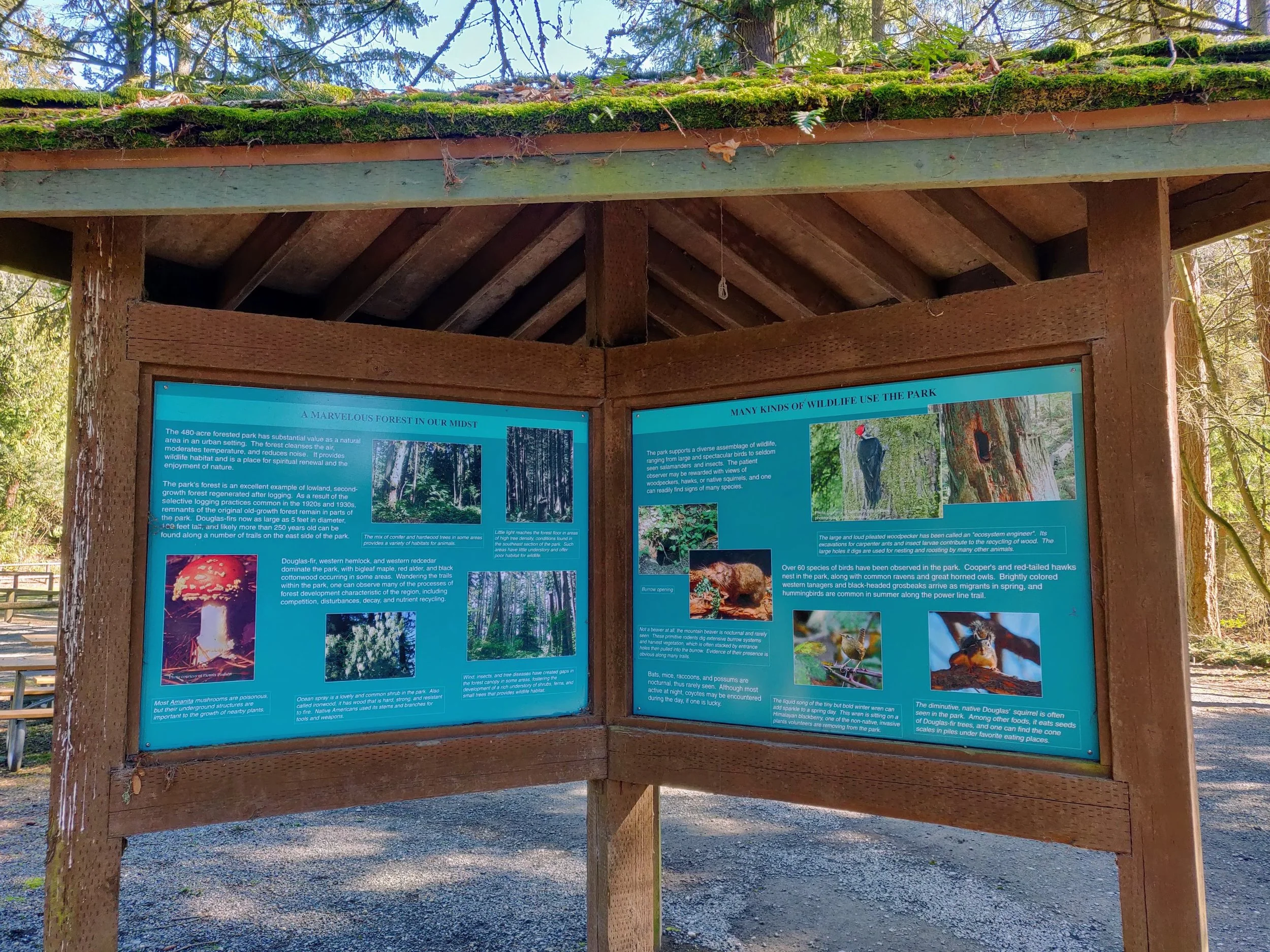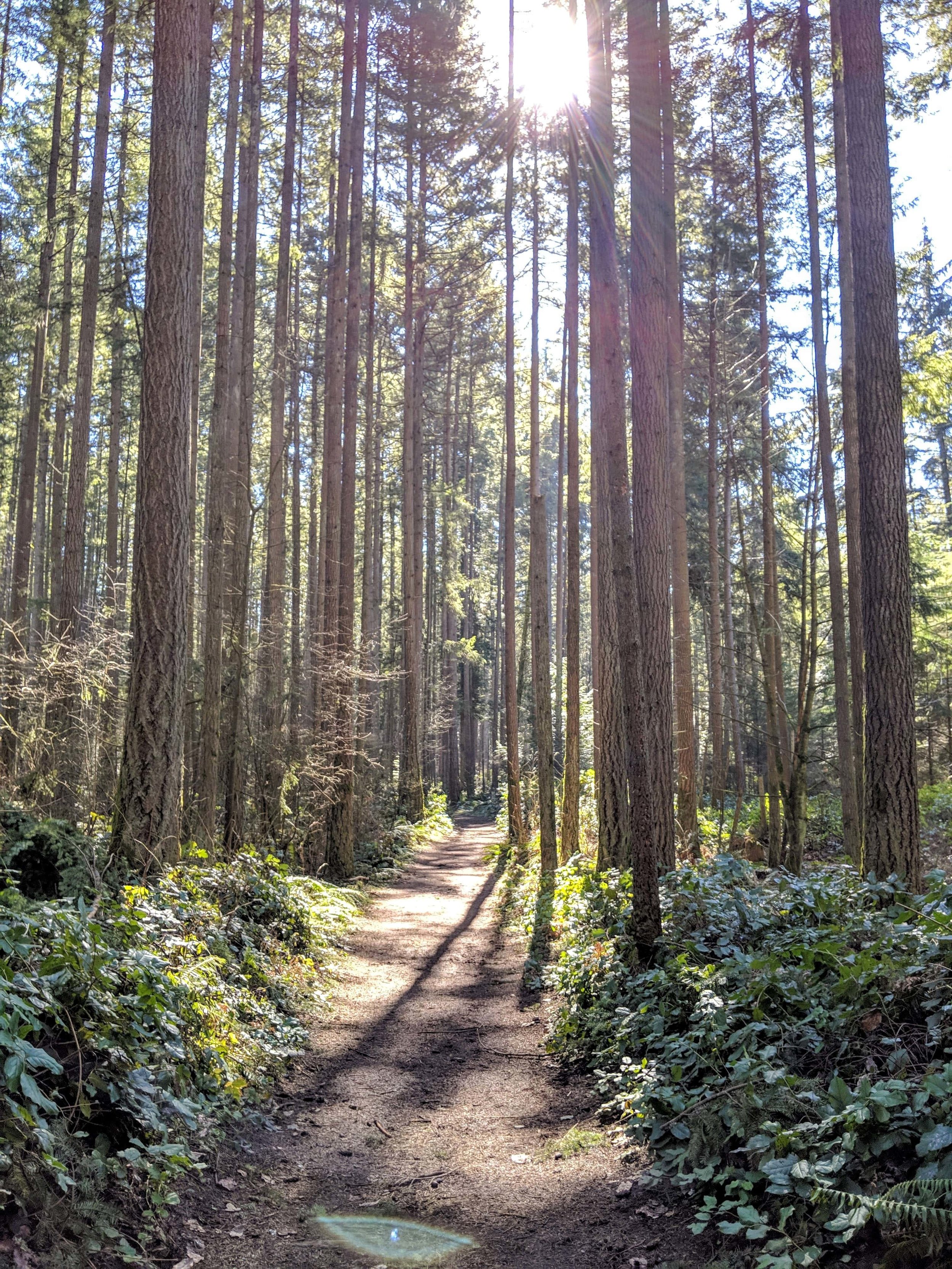An Afternoon Hike In Bridle Trails State Park
The Wilderness In The City
Welcome sign at Bridle Trails State Park
Known as one of the top equestrian parks west of the Mississippi, Bridle Trails State Park offers 28-miles worth of trails for horseback riding, hiking, jogging, and the walking of leashed dogs. This 489-acre day-use park started out as 640-acres, which was reserved for the purpose of supporting public schools by the sale of parcels of land and logging under the 1853 Organic Act of Washington Territory. Around 1930, horseback riding residents successfully petitioned the Commissioner of Public Lands to use the land for a park, which then lead to the establishment of Bridle Trails State Park in 1932.
“This life is yours...Take the power to walk in the forest and be a part of nature. Take the power to control your own life.”
Through The Forest We Go
Hiking the Raven Trail in Bridle Trails State Park
We arrived at the day-use parking lot almost precisely at noon. Although it was a bit chilly at around 41 degrees, the sky was bright with minimal clouds. A park ranger was patrolling the lot and checking vehicles for their Discover Passes, we asked him where the nearest restroom was and off we went.
After using the facilities, we jumped on the nearby Raven Trail and headed in a counter-clockwise direction. This park is known for a whopping 28-miles worth of trails, but within all of them, you’ll find three major trail systems: Raven Trail, Trillium Trail, and Coyote Trail. They are all relatively flat with very little in elevation change.
As began our trek the sun was directly overhead and beaming through to the forest floor wherever it could. With the park primarily being used for equestrians, we noticed right away how wide the trails were.
Here and there we noticed patches of snow still present just off the trail. The trail itself was dry and in good condition. Plentiful with ferns and moss, the surrounding forest was coming alive with the arrival of spring.
After about a mile we came to a clearing where a horse area known as “Little ring” on the map was (Big ring was near the restrooms by the parking lot) and where the overhead power lines cut directly through the middle of the park. Taking this power line trail south for about 200-feet and then hanging a left put us on the Coyote Trail. This is the longest of the three major trails and hugs the perimeter of all but the northwest part of the park.
To help keep you on track, each trail is marked with either a raven’s head, a trillium, or coyote prints on all the posts along the way, pointing you in the right direction. These signs are helpful, as there is a multitude of other trails intersecting these primary three. There are also additional side trails that lead to the outer boundaries of the park, which include nearby streets and some of the many homes right on the park’s edges.
Now deeper into the woods, the sounds of traffic disappeared. The rapid, hollow tapping sounds of a woodpecker hard at work were the only evidence of the bird’s presence, as we were not able to spot it. The caw-caw-caw of a raven on a broken tree top alerted the forest denizens of our transient occupation of their space. A chattering squirrel stood sentinel, high overhead in the safety of the treetops. Small songbirds flit to and fro in the underbrush, seen only in a blur of their quick movements. The sun dappled the path as it filtered down through the canopy, checkering our way. We were met with the occasional trail runner, hikers with dogs and horse riders, but between these encounters, it was just us and nature.
After the 3.5-mile hike on Coyote Trail, we met up with Trillium Trail. Along this interior loop is where we found many interpretive signs and many more hikers. Here, one of the signs lets us know this forest is 85-105 years old. While perhaps not knowing the exact age of the trees, the oldness of the place was apparent in the size of the surrounding trees. Rather large, towering specimens were numerous around us, causing us to feel small but also comforted.
Several spots along the trail had limbs intertwined and bending over. These “portals” along the pathway did indeed lead to mystical places. Natural, beautiful spaces that speak to our innermost selves. A quiet returning to our full, authentic being. These hikes, even short ones provide a natural rejuvenation that we long for and keeps us returning for more. As with all journeys we had reached the conclusion of this one, and after a total of 5.8-miles and 2 hours, 23 minutes, we arrived where we started.
Final Thoughts
The more we hike and explore the more we come to appreciate the value of these experiences. Being outside, enveloped by forest is a sort of spiritual medicine. A calming salve for anxieties and inner wounds from the stresses of day to day living. Parks like Bridle Trails stand as small sanctuaries. A place to escape, relax, mend and reinvigorate. A quiet path among the trees. You, your thoughts and the cradling embrace of nature.
Hey, we appreciate your readership! If you're in the market for new gear and would be willing to make your purchase through our Amazon link, we might get a small commission out of it. No additional cost to you and maybe a little something for us!
Thank you for your support!
Helpful Links & Information
Coordinates: 47.654841, -122.184326
Length of Trails: 28 miles
Difficulty: Easy
Pass Needed: Discover Pass
Have you been to Bridle Trails State Park before? Maybe you plan on going in the future? Let us know in the comments below.
Follow along on our wanderings around the Pacific Northwest.
The only thing better would be being there yourself!
Subscribe to Our Newsletter






















